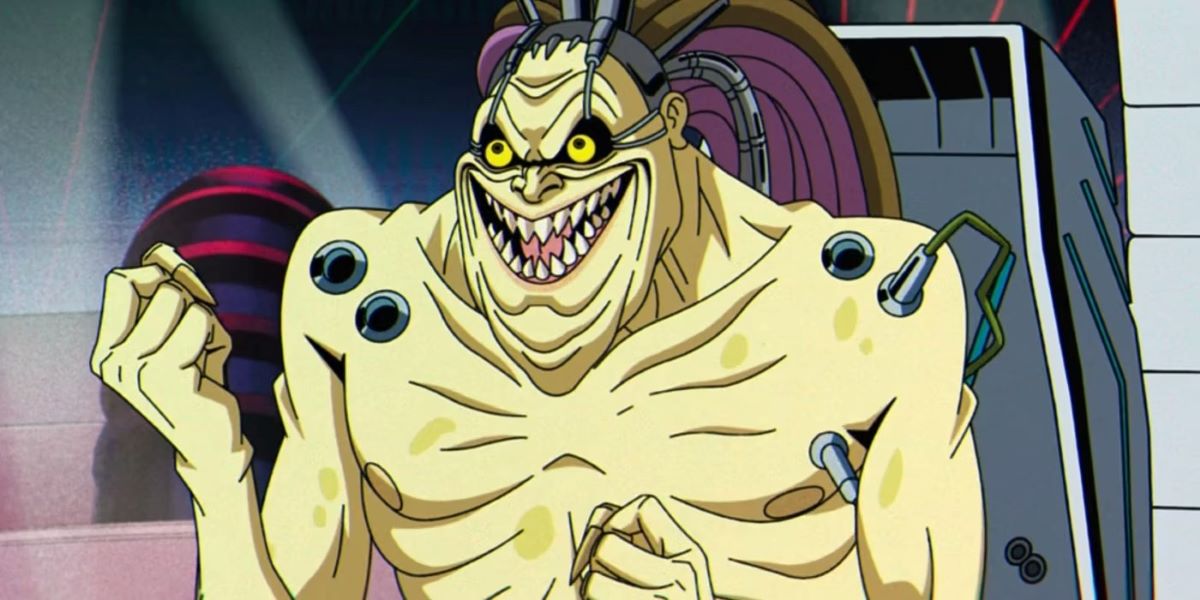Here’s the Lowdown on Mojo, the Single Best ‘X-Men ’97’ Villain Yet

I’ve said it before, and I’ll say it again (and probably a few more times): Even if X-Men ’97 wasn’t wielding some of the beefiest nostalgia known to nerdkind, it would still be flying just as high as it is now thanks to its top-notch storytelling fundamentals.
Having proved itself in that camp, there’s no harm in shoving plot aside to go full-blown, flashy nostalgia mode for half an episode. That’s precisely what the show did with “Motendo,” the first half of episode four, in which Jubilee and Roberto get trapped inside a video game created by the one and only Mojo, an old enemy of the X-Men who’s up to his old tricks that many of us remember from the original animated series.
But who is Mojo exactly? And why does he work so magnificently as a villain for the first half of X-Men ’97‘s fourth episode?
Who is Mojo?
Mojo is an alien creature who rules over the Mojoverse. There, he traps heroes like the X-Men and their on-and-off ally Longshot to act and compete in a variety of challenges structured like television programs, all for the entertainment of himself and the residents of the Mojoverse.
In X-Men ’97, Mojo has made the switch from television to video games, a move he claims was strategic as he sought the next evolution of mind-numbing media. He traps Jubilee and Roberto inside a game featuring levels inspired by previous X-Men adventures, including the night Jubilee was kidnapped by Sentinels, the early days of Genosha, and Asteroid M. They ultimately come out on top with the help of Abscissa, a Jubilee variant, and return to the real world.
Why the Mojo episode is lowkey brilliant
By the standards X-Men ’97 has set for itself so far, “Motendo” wasn’t all that impressive plot-wise. Jubilee’s relationship with Roberto and her officially coming into adulthood weren’t necessarily poor developments, but the episode’s sporadic, overarching arc of learning to embrace the future and all of its uncertainties just didn’t quite fit with Jubilee as a character, who’s always been pretty gung-ho about throwing herself into new situations. The payoff of said arc, then, felt unearned or otherwise compromised.
That said, by ’90s Saturday morning cartoon standards, it’s exactly what you’d expect, and “Motendo” was honoring those days of X-Men in every sense of the word. Between revisiting classic animated series settings and the pixelated set dressing of Mojo’s new video game trap (itself resembling a Super Nintendo), “Motendo” was entirely in service of a nostalgic, scrambly plotline that prioritized flashy comic book shenanigans over depth, which is more in line with a plot from the original animated series rather than its more complex successor in ’97.
“Motendo,” then, is one last ride for the spirit of the animated series as it plunges ahead into the more mature territory of X-Men ’97, as well as a riff on Mojo himself as a character. The villain tried and failed to literally force Jubilee back into the generally less complex, old-news beats of the original animated series, and given that Mojo was conceived as a parody of network television executives, the fact that he thought it was a good idea to do that puts “Motendo’s” satirical subtleties into a class of their own.
Indeed, we had our fun with the old show, but ’97 has proven that the people want smart superhero stories now more than anything; Mojo seems to have missed that memo, but hopefully from now on, Marvel Studios will not.
(featured image: Marvel Animation)
Have a tip we should know? tips@themarysue.com